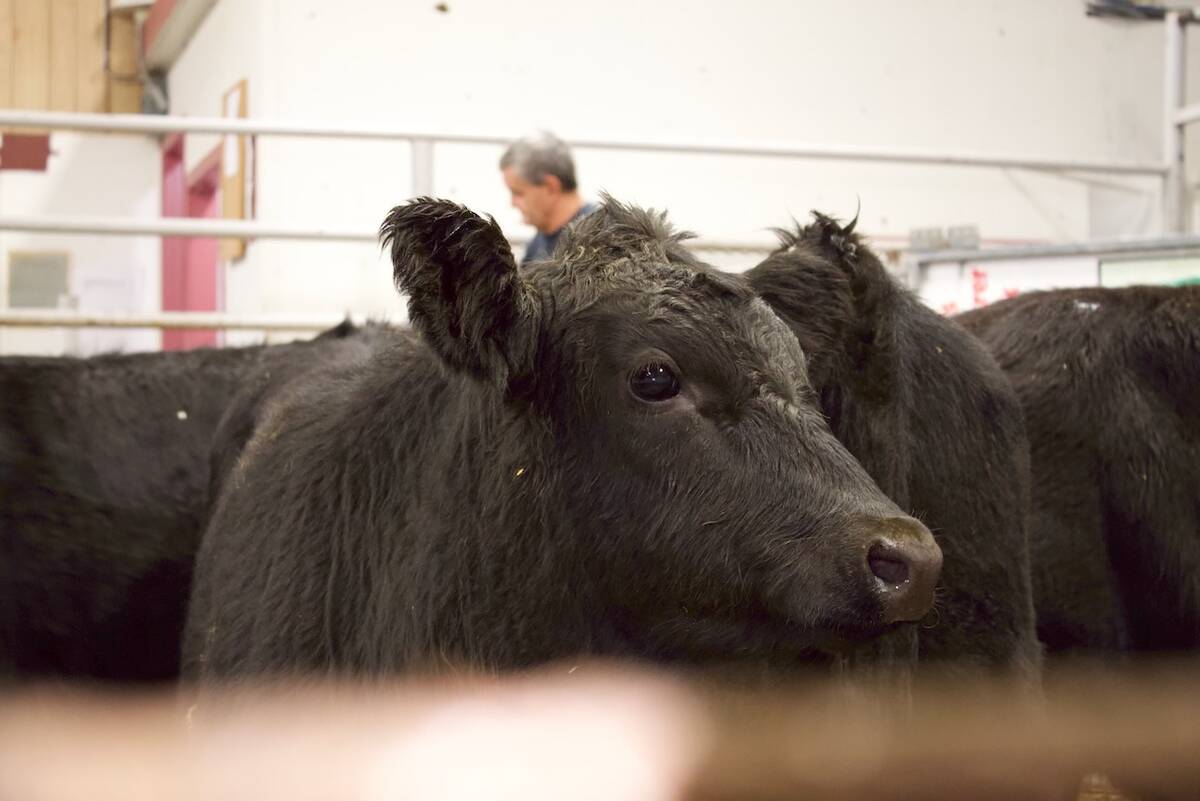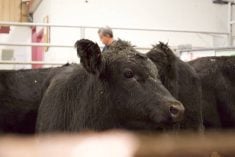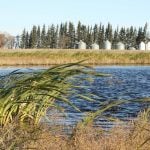I firmly believe in having a written drought plan. Droughts are nearly always extremely dynamic and can change rapidly, so while the plan will not be followed exactly, it does provide a focus to ensure accountable and proactive management. It also helps us focus on the things we can control rather than the things we cannot. Recognizing our limitations is actually very freeing as a manager.
Things we cannot control
Accepting that there are some things we cannot control as managers allows us to focus on the things that we can make a positive impact on. Aside from the obvious — rain — we also have no control over temperature, wind, timing and duration of the drought. I add these factors to the more simplistic approach of just rain, since these factors interact and can multiply the impact of a drought. For example, the two worst droughts from an impact perspective that I have experienced on our ranch were worsened because of cold spring temperatures that delayed plant growth and then were exacerbated by heat and high winds that increased evapotranspiration. The real impact of drought from a production scenario lies in plant growth and stock water availability, which are directly impacted by these varying combinations. Being aware of these elements in the planning process can help us ensure that we have “trigger points” in our plan so we make decisions based on environmental conditions.
Read Also

Cattle market grinds lower in December
Fed cattle suppliers are weighing on cattle markets across North America and that’s meant lower beef markets.
Plant growth
Plant growth should be a major part of any drought planning because we require some solar panel/leaf area to generate growth and we require plant material for our livestock.
While this is oversimplified, plants use energy from sunlight to combine carbon dioxide and water to create carbohydrates (sugar). In a drought situation, we still have lots of carbon in the air and usually lots of solar energy, but we are short of water (the hydrate part) to create those plant sugars. This lack of water slows or eliminates plant growth and also lowers the quality of that growth.
I prefer using plant growth as a drought indicator or trigger mechanism, rather than simple rainfall amounts. Previously I mentioned that the worst two droughts I have experienced started with reduced plant growth due to cold temperatures, not water limitations. Lack of forage should be a key warning sign in any plan.
The obvious thing in a drought is that plants grow more slowly. If we are willing to adjust our stocking rate to match the forage, then this slower growth is our friend in proactive management. The other key point to consider is that decisions made in the drought year and degree of use can impact growth and recovery in subsequent years.

Stocking rate and drought
Stocking rate can be a tricky concept but it’s important to ask, “How many animals (animal units) can my ranch handle for the year?” In a grazing situation the answer is always “It depends,” so perhaps a more visual way to consider it is this: “If it were possible and I was to cut and bale my entire pasture acreage, how many bales would I get? How many cows could I realistically feed with those bales?”
I think we can all accept that in a drought, the yield will be reduced. This means logically that we need to either a) reduce the number of animals or b) find an alternative way to feed them.
Destocking — reducing animal numbers— is usually the most realistic course of action, as it can immediately match animal numbers with available and predicted forage supplies. It is also important to understand that it can also be one of the most emotional courses of action. A written plan can help us objectively deal with these emotions. Once we pursue Option B of feeding, it is difficult to determine how long our supplies need to last, since we have no control over rainfall amounts or timing.
A good drought plan should contain contingencies for either Option A or B. Our plan at home maintains a “hit list” or groups of animals that are headed to the train station in specific conditions. First on our list is open cows or cows that have lost a calf. These will be marketed anyway, but we will move up the timing in a drought. Second is yearling grassers. Third, we will often re-evaluate our replacement heifers, and finally, older cows/pairs or cows that are otherwise on our target list for other production-related issues such as feet/legs/requiring assistance. Having this written down makes it much easier to proactively cull that pet or former 4-H heifer and to act in a timely manner.
One mind trick that drought plays on us regarding stocking rate is false hope of the drought breaking. Failing to make destocking decisions early enough may mean that we have to sell even more animals in the future. Again, a simplified example: If our ranch produced 365 round bales worth of forage and we have so many animals that we have to feed two bales per day, we will be unable to take our animals through the entire year. If we destock to a level requiring only one bale per day, we can maintain at least the core of our herd. A written plan helps to focus and maintain that managerial accountability. The decisions are still hard but they are more likely to be made when you have a formal prompt.
Cash flow and inventory?
With all of the destocking and sales in a drought year, even with potentially depressed pricing, a ranch will often see a significant increase in revenue. Sometimes governments will provide a tax deferral for revenues from the sale of cows during a drought year, but yearlings and calves are usually exempted from these types of concessions. The reality of a drought plan is that it needs to include cash flow planning and that planning is often more important in the year(s) following drought than during the drought itself. In the year(s) following a drought we often have to cover the same overheads (mortgages, machinery payments, living costs) while potentially having fewer cows.
Before being disheartened, remember that cows can be sold for dollars and dollars can be sold for cows. An inventory of dollars eats a lot less feed than an inventory of cows. In a drought year where cows are sold, with planning that cash can be used to replace inventory in the future. It is a fine line between using that money for feed to maintain current inventory or saving some to purchase replacements. This is an individual decision, but it is something that should be considered in the plan.
Time management – the real secret
There is a saying that every day in a drought is one day closer to rain. It is a bit facetious but it does directly point to the most important part of drought management. In the midst of a drought there are basically two things we can manage from a grazing perspective — cows and time. Time is the most important. When it does not rain, it seems fairly obvious that plant growth slows down. In turn, this also means that when a plant is grazed, it will take longer to recover. This means we also need to slow down our cattle movements. One of the key principles of grazing management is plant readiness for grazing and allowing time to recover. This again, like many things in a drought is counterintuitive.

If we want to graze plants and allow them to recover before we graze them again, and if plant growth is slow, we need to allow more recovery time. This means we need to slow our rotation to allow more time for plants to recover. In other words, if we would normally allow cattle to spend two days in a paddock, in a drought we may leave them for three days. If we had a pasture with 20 paddocks, in a normal year we would have 40 days between cows leaving and re-entering the paddock (two days x 20 paddocks). If we slow the rotation to three days, we now have a 60-day recovery period.
The obvious question is, how do we do that if we have less forage? That is where it becomes vital to get the stocking rate correct. If we do not have enough forage to slow down our grazing, then we are overstocked for the conditions.
The other thing we can do with cows to gain time on our ranch is to combine herds to create fewer but larger groups of cows. Depending on pastures and logistics this may not always be feasible, but it does help us gain time. Every time we split the cow herd it requires twice as many paddocks to gain the same recovery time for the plants. By combining herds, we have effectively created more paddocks and removed cattle from a larger portion of the ranch, allowing it more time to recover.
Stock water
Water is a challenge. It has been heartbreaking to see pictures from friends whose watering sources have dried up. We have been lucky, as our creeks stopped flowing this summer but beaver activity created enough pools of water to see us through. Hauling water is time-consuming and expensive, but may be something to consider in a drought plan. Options for watering may also enable us to access otherwise unavailable forage sources. I would also add that pumping water out of a source such as a dugout or creek can greatly increase the quality of water and the accessible volume available. Preventing cows from direct dugout access, for example, may result in the last several feet of water being potable as opposed to it being trampled into a muddy mess.
The very worst thing
The VERY WORST thing we can do in a drought is open gates and provide larger areas to our grazing herds. Our intuition tells us that there is limited forage so we need to split the herd into smaller groups or let them access larger areas. In truth, exactly the opposite is required. I had a rancher explain it to me very well — “If you let them have everything, where do you put them when it is gone?”
The other stuff
A good drought plan should start when it’s raining. Careful grazing management allows us to increase soil organic matter and build a litter layer during good years. The litter layer can trap moisture and reduces soil surface temperatures, which can greatly reduce impacts from lack of moisture and high temperature/evapotranspiration. Litter on the soil surface can’t prevent drought, but it does serve as a sort of rain barrel to buy us time.
Moisture/pasture and crop insurance are also potentially valuable tools to provide cash for feed purchases in a drought event and are worth investigating at the very least. As well, having a stockpile of feed (either standing or in a stack/pit) can provide some options for working through a drought situation.
Knowing your cost of production will also help you to figure out if buying feed, selling cows or other solutions may make sense.
Temporary fencing to subdivide pastures or access non-traditional acres such as open stubble fields, ditches or unused land may also provide some useful assistance to work through a drought.
Take care of yourself
Drought is extremely stressful. You are by far the most important part of your drought management plan. Drought management is all about buying time, and it is important to make sure that you buy some time for yourself. In my opinion, most farmers and ranchers I know forgo looking after themselves in moments of crisis. If you are not looking after yourself at least somewhat, you will be less able to care for the others in your sphere of influence, whether that is family, cows or grass. For this reason, I think that self-care should also be part of a written drought plan. Again, this relates back to ensuring that we can remain accountable to ourselves under stress.
If you find you are struggling in a drought or any other circumstance, reach out. There are good resources to help ease the burden and right the ship. A good resource to both help, and guide you to further resources is Do More Ag at domore.ag.















